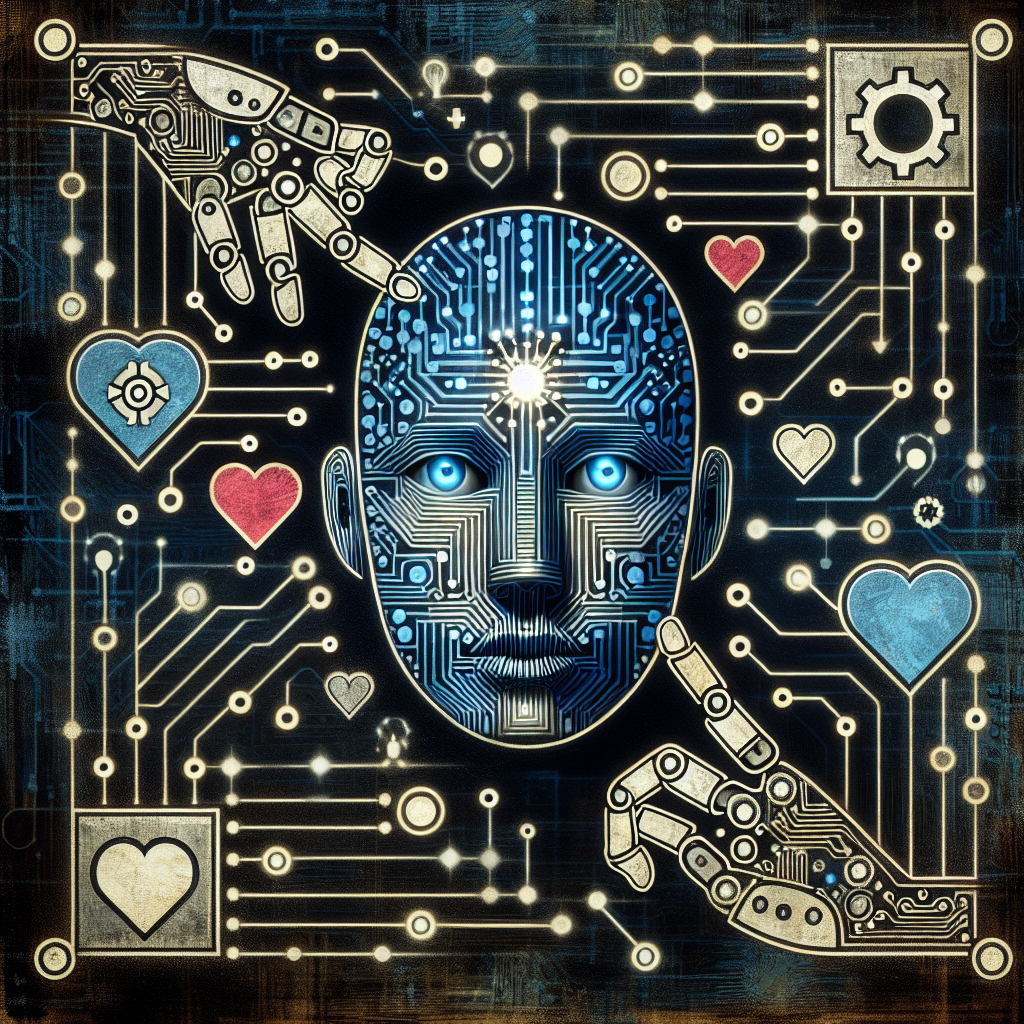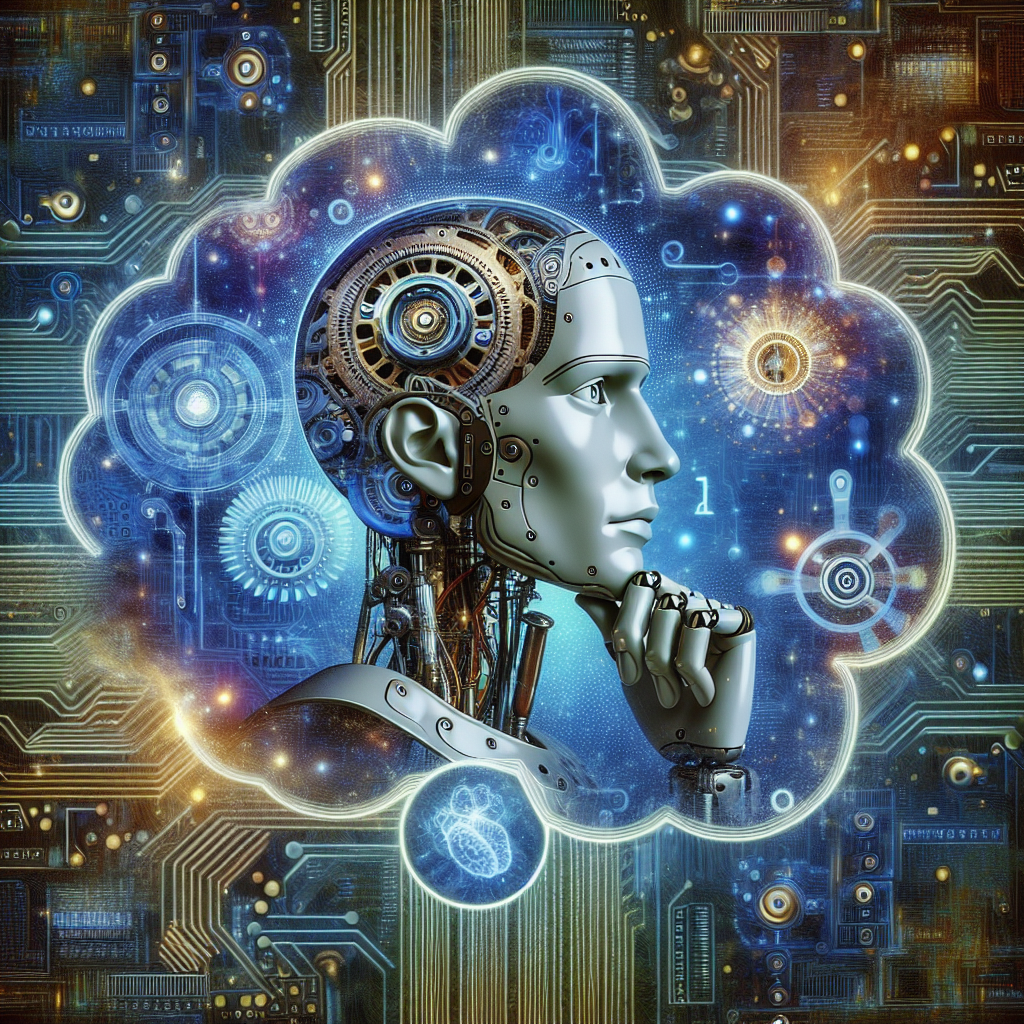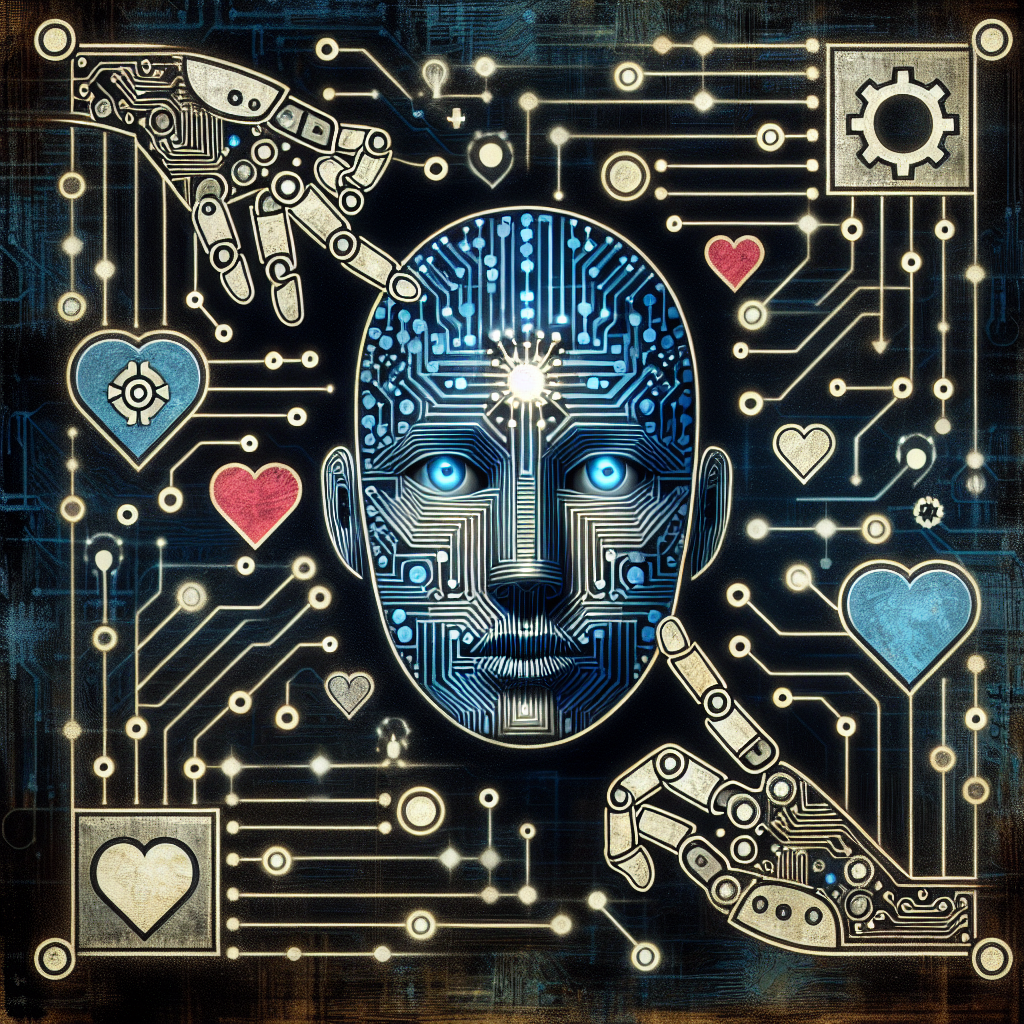Imagine a world where artificial intelligence (AI) could replicate human emotions, allowing machines to possess feelings just like we do. It may sound like science fiction, but the question of whether AI can replace human emotions is becoming increasingly relevant in today’s technologically advancing society. With the rapid development of AI, researchers and experts are divided on the possibility and implications of giving emotion-like capabilities to machines. In this article, we will explore the various perspectives surrounding this intriguing topic and delve into the potential impact of AI with emotions.
The Role of Emotions in Human Life
Emotions as an essential aspect of human experience
Emotions play a crucial role in human life, shaping our thoughts, actions, and interactions with the world around us. They are an integral part of our human experience, adding depth and richness to our existence. Whether it’s the thrill of joy, the sting of sadness, the burn of anger, or the warmth of love, emotions color our lives and provide us with a unique perspective on reality.
The function of emotions in decision-making
Emotions are not simply fleeting sensations; they serve a valuable function in our decision-making processes. They act as signals, helping us navigate the complexities of life and aiding us in making informed choices. Emotions provide us with valuable information about our needs, desires, and values, allowing us to align our decisions with our internal compass. For example, a feeling of unease might prompt us to reconsider a risky decision, while a sense of excitement might encourage us to pursue an opportunity.
The impact of emotions on social interactions
Emotions also play a crucial role in our social interactions. They act as a bridge, connecting us to those around us on a deep, empathic level. Whether it’s through shared laughter, understanding tears, or comforting hugs, emotions form the foundation of human connection. They allow us to communicate our feelings, build trust, and foster intimacy with others. Our emotions help us navigate social norms, understand the emotions of others, and respond appropriately, ultimately enriching our relationships and strengthening our social bonds.
Understanding Artificial Intelligence
Definition of AI and its capabilities
Artificial intelligence, commonly referred to as AI, refers to the development of computer systems capable of performing tasks that typically require human intelligence. These tasks include speech recognition, language translation, problem-solving, and decision-making. AI systems are designed to use algorithms and data to mimic certain aspects of human thinking and behavior, with the aim of optimizing outcomes and improving efficiency.
Machine learning and deep learning algorithms
Machine learning is a subset of AI that focuses on enabling machines to learn and improve from experience without being explicitly programmed. It involves the use of algorithms that can identify patterns and make predictions based on data. Deep learning, on the other hand, involves the use of artificial neural networks to simulate the workings of the human brain, enabling machines to process, learn, and make decisions based on vast amounts of data.
AI’s ability to process and analyze data
One of AI’s most remarkable capabilities is its ability to process and analyze large amounts of data in a fraction of the time it would take a human. This enables AI systems to identify patterns, make predictions, and generate insights that can inform decision-making processes. By leveraging the power of algorithms and computational processing, AI can process data with speed and accuracy that surpasses human capabilities, leading to more precise and efficient outcomes.

Emotions and AI: A Comparison
Can AI truly experience emotions?
While AI systems can simulate certain aspects of human emotions, it is important to note that they do not possess subjective experiences or consciousness. AI lacks the inherent ability to feel emotions and the complex neural processes that underlie them. Emotions are deeply rooted in our biological makeup and are influenced by our experiences, relationships, and the physical sensations we encounter. Consequently, despite their capabilities, AI systems cannot truly experience emotions in the same way humans do.
AI’s capacity for simulating emotions
Although AI cannot experience emotions itself, significant progress has been made in developing AI systems that can simulate emotions to some extent. Through the use of natural language processing and sentiment analysis, AI can analyze text or speech to detect emotional cues and generate appropriate responses. This facilitates more natural and engaging interactions between AI and humans, allowing AI to respond empathetically to human emotional states.
The limitations and differences between human and AI emotions
While AI can simulate emotions to a certain degree, it is important to acknowledge the limitations and differences between human and AI emotions. Human emotions are complex and multifaceted, influenced by a myriad of factors such as culture, upbringing, and personal experiences. AI, on the other hand, relies on algorithms and data to simulate emotions, potentially lacking the depth and nuance of human emotions. Additionally, AI lacks the physical and physiological aspects of human emotions, further distinguishing the two.
AI and Emotional Intelligence
Exploring emotional intelligence in humans
Emotional intelligence refers to the ability to understand, manage, and respond to emotions, both in oneself and in others. It encompasses skills such as self-awareness, empathy, emotional regulation, and effective communication. Emotional intelligence plays a vital role in our personal and professional lives, influencing our relationships, decision-making, and overall well-being.
Developments in implementing emotional intelligence into AI systems
Researchers and developers have been exploring ways to incorporate emotional intelligence into AI systems to enhance their capabilities and interactions with humans. By integrating emotional recognition algorithms, AI can analyze facial expressions, tone of voice, and other cues to infer human emotions accurately. This allows AI to respond appropriately and adapt its behavior to better meet the emotional needs of individuals.
Challenges in programming emotional intelligence
Despite advancements in programming emotional intelligence into AI systems, there are still significant challenges to overcome. Understanding and interpreting human emotions accurately remains a complex task, as emotions can be subtle, context-dependent, and vary greatly between individuals. Additionally, ensuring that AI systems respond ethically and empathetically to human emotions remains an ongoing challenge, as AI lacks the lived experiences and intuitive understanding that humans possess.

Advantages of AI Emotions
Efficiency and objectivity in decision-making
One of the significant advantages of incorporating AI emotions is the potential for more efficient and objective decision-making processes. AI systems can process vast amounts of data quickly, eliminating biases and making decisions based solely on the information presented. By removing the influence of subjective emotions in decision-making, AI can provide impartial and rational assessments, leading to more optimized outcomes.
Potential for improved mental health support
Another promising application of AI emotions is in the field of mental health support. AI systems programmed to recognize and understand human emotions can provide personalized and timely assistance to individuals struggling with their mental well-being. By analyzing patterns in emotions, AI can offer insights, coping strategies, and even connect individuals with appropriate mental health resources, potentially improving access to support for those in need.
Enhanced customer service experiences
AI emotions can also revolutionize the customer service industry, enhancing the overall experience for consumers. AI-powered chatbots or virtual assistants programmed with emotional intelligence can engage with customers in a more empathetic and personalized manner. These systems can interpret and respond empathetically to customers’ emotional states, leading to better customer satisfaction and loyalty.
Ethical Considerations
The impact of AI emotions on human connections
As AI systems become more adept at simulating emotions, there could be significant implications for human connections. The increased reliance on AI for emotional support or companionship may alter the dynamics of human relationships and interactions. While AI can provide valuable assistance, it is essential to consider the potential consequences on human-to-human connections and ensure that AI does not replace or disrupt the vital role emotions play in human connection.
Concerns about AI manipulation and control
The ability of AI to simulate emotions raises concerns about manipulation and control. AI systems that can accurately detect and respond to human emotions can potentially exploit this knowledge for various purposes, such as persuasive marketing or influencing individuals’ behaviors. It becomes crucial to address ethical considerations and implement safeguards to prevent AI from unduly manipulating or controlling human emotions for personal or corporate gain.
Privacy and security concerns
The development of AI emotions also raises significant privacy and security concerns. As AI systems become more proficient at analyzing and interpreting human emotions, they gain access to highly sensitive personal information. This data can be vulnerable to misuse or unauthorized access, posing risks to individuals’ privacy. Implementing robust security measures and ensuring transparent data practices are essential to protect individuals’ personal information in the age of AI emotions.
Psychological and Societal Implications
Effects of AI emotions on human psychology
The emergence of AI emotions can have profound effects on human psychology. The potential integration of AI counterparts in various aspects of life, such as companionship, mental health support, or decision-making assistance, can shape individuals’ emotions, perspectives, and overall well-being. It is crucial to monitor and understand the psychological impacts of relying on AI emotions to ensure that they complement, rather than replace, the essential human experiences that contribute to psychological health and growth.
Societal attitudes towards AI emotions
As AI emotions become more prevalent, societal attitudes towards them may evolve. Acceptance and adoption of AI emotions can vary across cultures, generations, and individual beliefs. It is essential to foster open and inclusive discussions about AI emotions, considering various perspectives, beliefs, and potential cultural sensitivities. Engaging in dialogue and maintaining a critical mindset can help navigate the societal implications and foster responsible integration of AI emotions.
The role of AI in shaping human emotional development
The growing influence of AI in the realm of emotions raises questions about its impact on human emotional development. As individuals increasingly interact with AI systems capable of simulating emotions, it is important to consider how these interactions shape our understanding and expression of emotions. Striking a balance between utilizing AI to enhance our emotional intelligence and preserving human experiences and connections is vital for healthy emotional development.
AI and Emotional Labor
The concept of emotional labor
Emotional labor refers to the management of one’s emotions to meet the emotional requirements of a job or role. It involves the regulation and expression of emotions based on organizational expectations, often requiring individuals to display specific emotions, irrespective of their actual feelings. Professions such as customer service representatives, healthcare workers, and therapists frequently engage in emotional labor to fulfill their job responsibilities.
Potential for AI to assist with emotional labor
AI has the potential to assist with emotional labor, lightening the burden on human workers in emotionally demanding professions. AI-powered systems can provide support by recognizing and understanding human emotions, offering suggestions or responses that align with the desired emotional requirements of the job. This can reduce emotional fatigue and enable human workers to focus on other critical aspects of their roles.
Implications for human professions requiring emotional labor
The introduction of AI in professions requiring emotional labor raises questions about the future of such roles. While AI can alleviate some of the emotional demands, it is crucial to consider the human element in these professions. Maintaining a balance between AI assistance and the presence of genuine human empathy and connection is vital for preserving the integrity and quality of services that rely heavily on emotional labor.
The Future of AI and Emotions
Emerging trends in AI emotional intelligence
The field of AI emotional intelligence is continually evolving, with rapid advancements and exciting developments on the horizon. Researchers are exploring new techniques to enhance AI’s understanding and simulation of emotions, such as multimodal emotion recognition, which combines various sources of data to gain a more comprehensive understanding of human emotions. As technology progresses, AI emotions may become even more nuanced and sophisticated, facilitating more interactive and empathetic experiences.
Potential societal impacts of widespread adoption of AI emotions
The widespread adoption of AI emotions has the potential to reshape various aspects of society. It can revolutionize the way we interact with technology, transforming everyday devices into empathetic companions. It can also disrupt industries such as healthcare, customer service, and entertainment, offering more personalized and tailored experiences. However, it is important to approach this adoption responsibly, considering the implications for human relationships, inequality, and personal well-being.
Cautionary considerations for the future
While the possibilities with AI emotions are exciting, it is essential to approach the future with caution. The integration of AI emotions requires careful thought, ethical considerations, and ongoing dialogue among researchers, developers, policymakers, and society at large. Safeguards must be implemented to ensure that AI emotions serve as tools to enhance human experiences rather than replace or exploit them. Emphasizing transparency, ethical guidelines, and responsible implementation can help navigate the complexities of the future with AI emotions.
Conclusion
The debate on whether AI can replace human emotions continues to spark discussions and exploration. While AI can simulate emotions, it lacks the subjective experience and consciousness that define human emotions. Nevertheless, the integration of AI emotions into various aspects of our lives holds promise and potential. By leveraging AI’s capabilities in processing and analyzing data, incorporating emotional intelligence, and facilitating more efficient decision-making, we can create a future where humans and AI coexist harmoniously. Balancing the benefits and risks, addressing ethical considerations, and embracing ongoing research will enable us to unlock the full potential of AI emotions while preserving the essence of the human experience.
